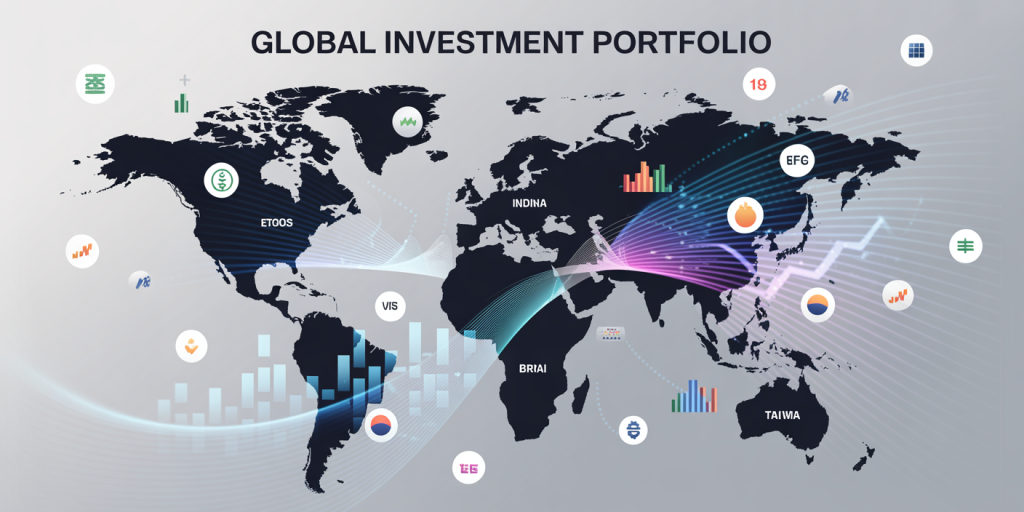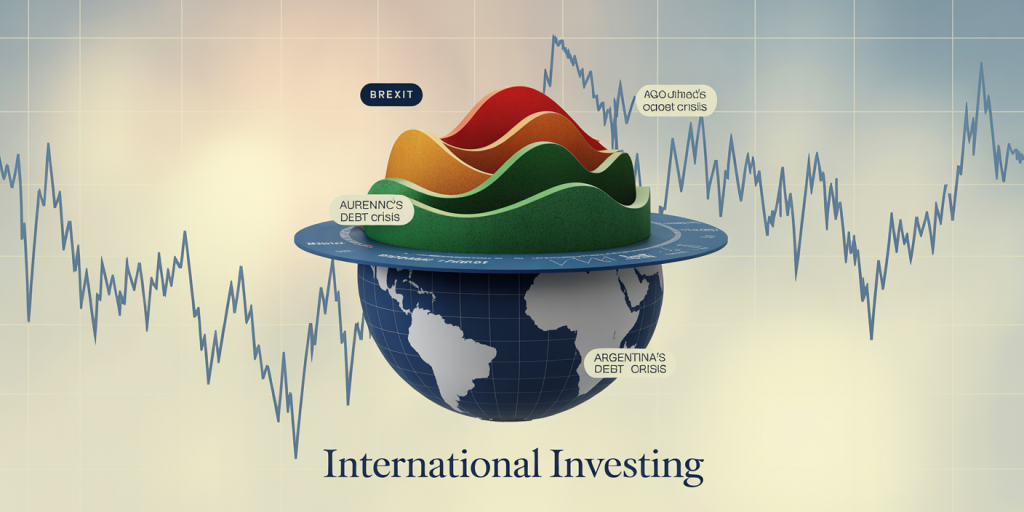What to Know About International Diversification in Your Portfolio
Anúncios
In an increasingly interconnected global economy, investors are constantly seeking strategies to maximize returns while mitigating risks. One such approach gaining traction is international diversification—spreading investment capital across different countries and markets rather than focusing solely on domestic assets. While it might appear complex, understanding international diversification can unlock significant benefits for long-term portfolio stability and growth.

This article explores the core concepts, advantages, practical considerations, and future outlook of integrating international assets into your investment portfolio. By drawing from real-world examples, statistical insights, and comparative analysis, you will gain the knowledge required to make informed decisions about global investing.
Anúncios
—
Why International Diversification Matters
Investing exclusively in domestic markets exposes portfolios to country-specific risks such as economic recessions, political instability, or sector downturns. International diversification aims to reduce this vulnerability by allocating capital across multiple geographic regions that often have differing economic cycles, regulatory environments, and growth prospects.
Historically, various international markets have experienced phases of outperformance relative to the U.S. market. For example, between 2003 and 2007, emerging markets like China and India delivered average annual returns exceeding 20%, significantly higher than the U.S. equities market. However, these markets also carry unique risks such as currency fluctuations and governance variability.
Data from MSCI (Morgan Stanley Capital International) illustrates that as of 2023, non-U.S. equities constitute roughly 60% of the global investable equity market, emphasizing the sizable opportunity pool available abroad. Incorporating international equities can reduce overall portfolio volatility due to imperfect correlations between markets. For instance, the correlation coefficient between U.S. and European stock markets has historically hovered around 0.70, meaning they do not move in perfect tandem, which provides diversification benefits.
—
Key Benefits of Adding Global Assets to Your Portfolio
One of the primary advantages of international diversification is risk mitigation. By spreading investments across countries with differing economic drivers, investors shield themselves from localized downturns. For example, during the 2008 financial crisis, U.S. stocks plunged by approximately 37%, while some emerging markets like Brazil initially dropped sharply but rebounded faster thanks to strong commodity prices and internal reforms.
Another benefit is enhanced return potential. International markets often present growth opportunities unavailable at home. Consider the tech boom in South Korea and Taiwan, which have become hubs for semiconductor manufacturing and innovation. By adding exposure to these regions, investors can tap into growth sectors underrepresented in domestic indexes.
Currency diversification also plays a role. While currency fluctuations introduce an additional layer of risk, they can also enhance returns when the U.S. dollar weakens. According to a 2022 CFA Institute report, currency movements added nearly 1.5% annualized returns to diversified international portfolios over the prior decade.
—
Key Considerations and Risks Involved
Despite its advantages, international diversification is not without challenges. One notable risk is currency volatility, which can amplify losses or gains depending on exchange rate movements. For instance, U.S. investors who held pounds sterling experienced both benefits and setbacks as the British pound fluctuated between 2016 and 2023 amid Brexit uncertainties.
Political and regulatory risks are also prominent. Countries with emerging or unstable political systems may impose sudden policy changes, affecting foreign investors. Argentina’s debt crisis in 2018 serves as a cautionary tale where steep currency devaluation and capital controls significantly impacted portfolio values.
Furthermore, differences in accounting standards, disclosure requirements, and corporate governance practices can make it difficult to evaluate foreign companies with the same confidence as domestic firms. This necessitates thorough due diligence or reliance on reputable international mutual funds and ETFs that offer professional management and risk assessment.
—
Practical Ways to Achieve International Diversification
Individual investors can access international markets through various vehicles. One straightforward method is investing in globally diversified mutual funds or exchange-traded funds (ETFs) that track international indexes such as the MSCI EAFE (Europe, Australasia, Far East) or MSCI Emerging Markets index. These funds provide instant exposure to hundreds of companies across multiple countries, thereby spreading risk.
Another option is direct investment in individual foreign stocks via brokerage accounts that support international markets. However, this approach requires deep understanding of local market conditions, tax implications, and potential fees associated with cross-border transactions.
Below is a comparative table outlining popular international investment options:
| Investment Vehicle | Pros | Cons | Example |
|---|---|---|---|
| International ETFs | Low cost, diversified, liquid | Limited exposure to small cap or niche | Vanguard FTSE All-World ex-US ETF (VEU) |
| Global Mutual Funds | Professional management, diversified | Higher fees, possible minimum investments | American Funds EuroPacific Growth Fund (AEPGX) |
| ADRs (American Depositary Receipts) | Easy access to foreign firms on U.S. exchanges | Limited foreign market coverage | Alibaba Group (BABA) |
| Direct Foreign Stock Purchase | Full control over picks | Complex tax/tariff issues, regulatory differences | Samsung Electronics (KRX:005930) |
—
Case Studies Demonstrating International Diversification in Action
The 2020 COVID-19 pandemic made global diversification particularly salient. U.S. stocks plummeted sharply in March 2020 but rebounded quickly due to robust stimulus measures and technology sector strength. Simultaneously, some European markets lagged initially but experienced more prolonged recoveries coinciding with vaccine rollouts and reopening policies.
For instance, investors with a diversified portfolio holding approximately 40% in international equities reported lower volatility during the pandemic period compared to those concentrated solely in U.S. stocks. Data from Morningstar shows that while the S&P 500 declined about 34% in Q1 2020, the MSCI ACWI ex USA index dropped roughly 29%, highlighting differences in market dynamics.
Another example is the performance of emerging markets like India and Brazil over the past decade. Although these economies faced volatility due to political shifts and commodity price swings, their long-term GDP growth and expanding middle classes contributed to annualized equity returns of approximately 8-10%, often outpacing mature markets.
—
How to Balance Your Portfolio: Domestic vs. International Allocation
Determining the right percentage of international exposure depends on factors such as your investment horizon, risk tolerance, and financial goals. Studies suggest that including 20-40% of international assets can optimize the risk-return profile for most diversified portfolios.
Aggressive investors seeking higher growth potential might tilt toward emerging markets, which currently represent about 15% of global equity capitalization but feature higher volatility. More conservative investors may prefer developed markets with stable regulatory frameworks.
Regular portfolio reviews and rebalancing are essential as market conditions and currency valuations shift. For example, during periods of significant U.S. dollar strength, increasing international allocations might be prudent to benefit from currency appreciation once trends reverse.
—
Trends and Future Outlook for International Diversification
Looking ahead, the landscape of international investing is poised to evolve with emerging technologies, geopolitical shifts, and sustainable investing trends shaping opportunities. The rise of Asia as an economic powerhouse continues to attract capital, with China, India, and Southeast Asia expected to contribute substantially to global GDP growth over the next decade.
Environmental, Social, and Governance (ESG) factors are increasingly influencing foreign market entries, with investors seeking countries and companies demonstrating strong sustainability practices. This trend may impact which regions outpace others in attracting international funds.
Additionally, advancements in fintech and digital asset platforms are simplifying access to global markets for retail investors, lowering barriers to international investment. Blockchain-based securities and tokenization might create new avenues to diversify globally in the coming years.

However, geopolitical tensions and protectionist policies could pose challenges to seamless international diversification. Therefore, continuous monitoring of global economic and political landscapes remains critical for managing an internationally diversified portfolio effectively.
—
In conclusion, international diversification offers compelling opportunities to enhance portfolio performance and reduce risk by accessing a broad array of markets and economic environments. While it involves added complexity and considerations like currency and political risk, prudent allocation and ongoing management can help investors harness the power of global financial markets. Staying informed, leveraging diverse investment vehicles, and adapting to evolving trends will position your portfolio to thrive in an interconnected world economy.

